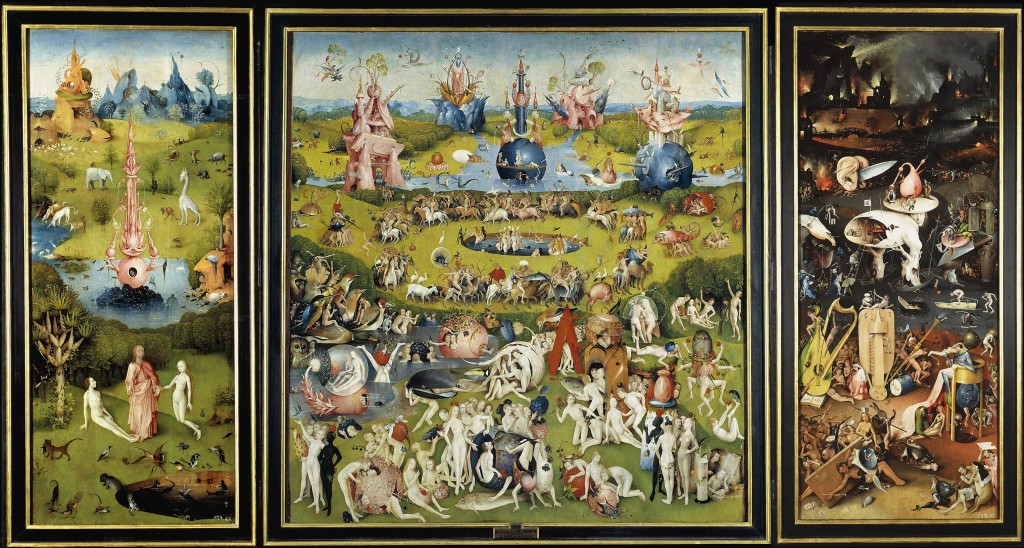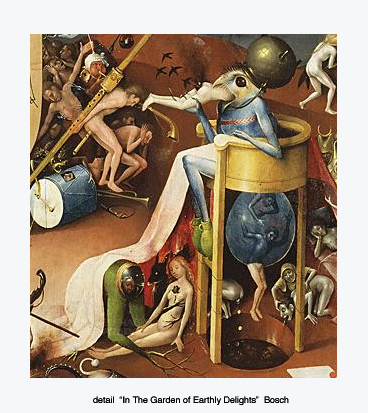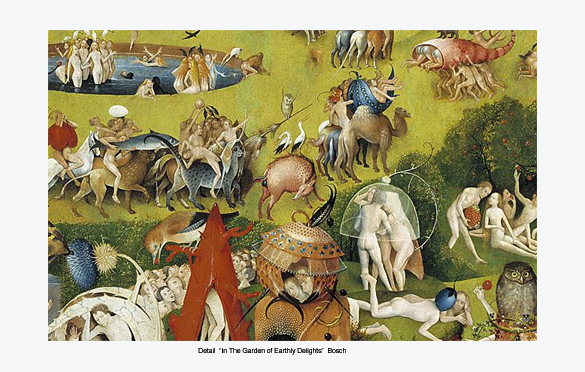So, Alberto, I was writing you last night this email and my mind got carried away with the following thoughts. I wrote till midnight and finally hauled myself off to bed. (I really need a girlfriend!) This morning, in the light of day, I have gone back to your website and looked more carefully at your 3 portfolios. I see now that you are aware of the issue I present here and you are dealing with it as best you can; the combination of photography, painting, and digital work feeding one another.
Still, I want to send this to you simply because it was so difficult to write and you might enjoy it.
…..
Dear Alberto,
I was on artmesh tonight, landed upon your photo and thought, ‘You know, I would really like to see more of Alberto’s face!’ I am fascinated by the portrait photos people choose to represent them on this site. More often than not they seem to mirror the quality and substance or their work. This half-view portrait implies a beautiful symmetry. The space to your right suggests an out of body connection to something greater than yourself. Your eyes (eye) closed makes you less approachable and more mysterious. The portrait photo’s perfect lighting lends a persona of professionalism. All these attributes are evident in your work and so I am assuming that this portrait is a very good representation of what you are about and that you are completely happy with it.
Still, I landed upon your photo again tonight and thought, ‘I wish I could see more of Alberto’s face.’
I suppose I would not even think to write this if you had not posted your ‘study for hovering bodies’. It has me thinking that maybe you are smart enough and genuine enough to need no secretiveness.
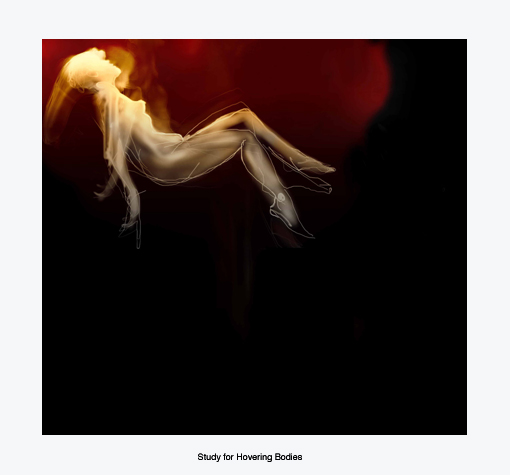
Several years ago I found myself at the Dallas Art Museum, transfixed before a winter landscape painting done by Paul Cezanne over 100 years earlier. For 15 minutes I stood before this painting and, I swear, every stroke, every decision which led to its completion, was there for me to experience as if I were painting it myself for the first time. Most paintings never achieve that level of grace, but most paintings don’t count.
Alberto, can that moment of creative electricity, prolonged over an hour or a days time, be contained and released in a digital image? To reference your last note to me: the reason people think digital imagery is born into the world fully formed is that it is seamless. Unlike painting, it does not easily reveal its process, thus little of its nature as an ‘object-in-the-world’ is revealed. It is born without a record of its physical history. Does this mean then that, in this digital realm, the revelatory dimension of the art making process will forever remain a mystery? And if so, where then does its soul reside?
My conundrum when it comes to your work is this: You approach your imagery with the aesthetics of a painter. I see these images and think, ‘What a beautiful painting.” but they are not. Seen in the flesh I know that, at best, they would appear as beautiful photos. They cannot do what paintings do; carry in the physical materials used to create them a history that can be uncovered and rediscovered with each new viewer.
I must ask myself, “In asking this question am I looking in the wrong direction? Is this only an issue for an antiquated painter such as myself? Am I simply wanting your beautiful images to be something other than what they are?” Ultimately though, I think it is a valid point of inquiry.
Well, that is as far as I can go with this thought tonight. I am suddenly very tired.
Alberto, I hope you don’t mind my pestering you with these thoughts. I like to write and I am sincerely curious as to your process and your ideas about what you do. I believe that there are revelatory acts and there are obfuscations. Your work feels genuine to me. Within these images you are being who you are, bringing to them a complexity and painterliness that is appealing.
I don’t wish to challenge the roots of who you are or what you do. I just want to understand how you reconcile the substantial qualities of traditional materials with this new medium you are using.
Yours sincerely,
Stan B
…..
Hello Stan,I received your email and I’d like thank you so much!..so Cool!!! I wish to have this conversation face to face one day. Maybe my lack of english skills turns it into less or more than it really is? Your text is deep and asks questions that concern me too. I believe the anima is behind the creation, and behind the creator. Maybe the difference is to be found in the nature of our trajectory.
Yes, we’re able to access the importance of a piece of art through its process, but also we can taste a hint, or maybe sense completely, the quality of a Rembrandt, Ingres, or Bonnard painting seen reproduced in the magazine which we are looking through while waiting on the street corner for a friend to arrive. The eletricity you mentioned and the capability of an image to turn into a light for the world (a light which makes colors exist even in the dark) are part of the same visions artists have applied since the first paintings on cave walls. Traditional art to nanoart, creativity is inner.
To me it is a challenge to all my senses. The hovering bodies, for example, I had to draw in digital form using a mouse device and, more difficult still, with a right hand device. I’m left handed. All efforts and results (good or not) must live in the elements which constitute what you’ve created. Painting or photography, they are both manipulated with an eye toward the platform that it is intended to “reach”.
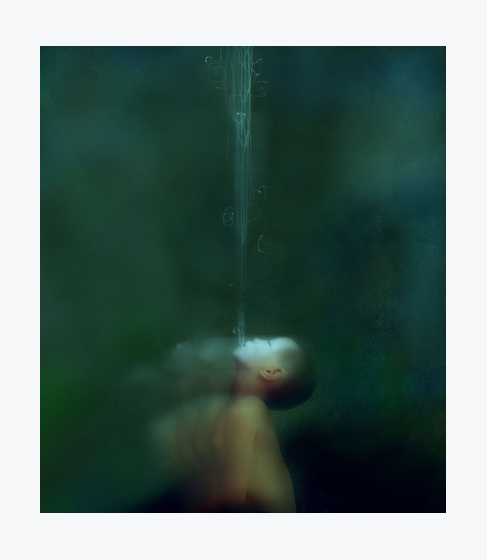 I’m so excited about this issue that I created a series of works called “Practical Manual to the Intangible”. I love painting. I love the process and the studio environment, the smell of paint. I love painting in early morning; that universe of white canvas waiting for my appearance. And I believe these feelings can be transported to any media. If you believe so, its there. The value is also there and present for everyone who creates, who feels it, who sees it. There is a part in Aldus Huxley’s book, Brave New World. He mentions something called Sensitive Cinema; a place where you watch a movie and feel exactly what the characters feel.
I’m so excited about this issue that I created a series of works called “Practical Manual to the Intangible”. I love painting. I love the process and the studio environment, the smell of paint. I love painting in early morning; that universe of white canvas waiting for my appearance. And I believe these feelings can be transported to any media. If you believe so, its there. The value is also there and present for everyone who creates, who feels it, who sees it. There is a part in Aldus Huxley’s book, Brave New World. He mentions something called Sensitive Cinema; a place where you watch a movie and feel exactly what the characters feel.
And honestly, all in all, I undertand that artists need to have talent, vocation, and technical development but, behind all of these, the aim is to create sensibility (and more and more, re-sensibility) to experience and make connections to others, to create extensions….
Well, 2 am here. My mind is fading too :) I don’t know if what I have said is exactly what you were asking about or if what I have said makes sense but, anyhow, I’d like to thank you so much for considering my art and this discussion….. honestly.… thank you very much.
Kind regards from Brazil,
Alberto
(authors note: To see more of Alberto’s work click on Alberto’s face.)
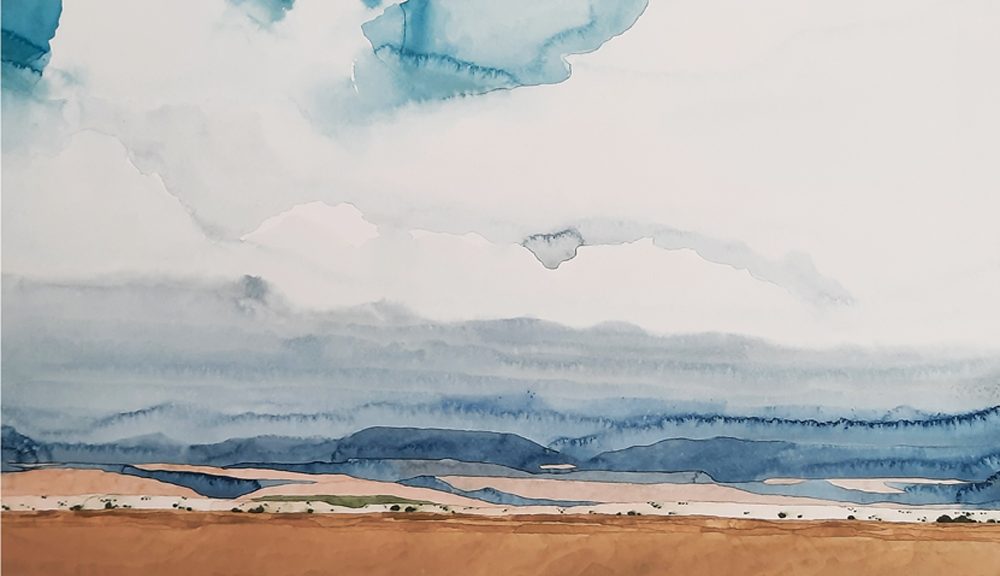
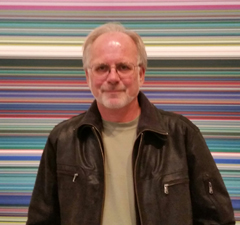
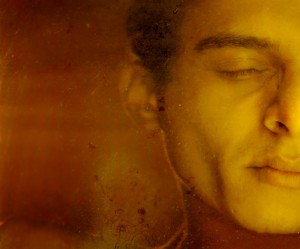

 I’m so excited about this issue that I created a series of works called “Practical Manual to the Intangible”. I love painting. I love the process and the studio environment, the smell of paint. I love painting in early morning; that universe of white canvas waiting for my appearance. And I believe these feelings can be transported to any media. If you believe so, its there. The value is also there and present for everyone who creates, who feels it, who sees it. There is a part in Aldus Huxley’s book, Brave New World. He mentions something called Sensitive Cinema; a place where you watch a movie and feel exactly what the characters feel.
I’m so excited about this issue that I created a series of works called “Practical Manual to the Intangible”. I love painting. I love the process and the studio environment, the smell of paint. I love painting in early morning; that universe of white canvas waiting for my appearance. And I believe these feelings can be transported to any media. If you believe so, its there. The value is also there and present for everyone who creates, who feels it, who sees it. There is a part in Aldus Huxley’s book, Brave New World. He mentions something called Sensitive Cinema; a place where you watch a movie and feel exactly what the characters feel.